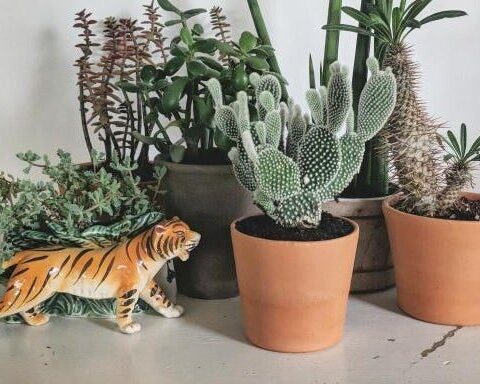$15 Flat Rate Shipping Everyday. Your order ships FREE when you spend $150 or more!

Light is the most important factor for happy and healthy houseplants. It also seems to be one of the more confusing aspects of plant parenthood. Measuring light can be as complex or straightforward as you are prepared to make it; from fancy light meters to phone apps to simply observing light with your eye.
Many houseplants prefer bright, indirect light, however light needs vary by plant species and variety. It’s important to know the light requirements of your houseplants and ensure they’re in the right conditions to thrive. Cacti and succulents thrive in bright sunny locations, think that south-facing window that gets hot on summer afternoons, however they’re some of the only varieties that do.
Brighter isn’t always better when it comes to light, as light that is too harsh can burn sensitive varieties or cause lush leaves to loose their colour and appear bleached or faded. As a general rule, south-facing windows provide bright light, east and west-facing windows provide moderate light, and north-facing windows provide low light levels.
Of course light levels can be obstructed – from blinds indoors or outdoor landscaping for example – so have a look at the surroundings before assuming your west-facing window receives bright light.
Light intensity is also impacted by how close or far away from a window you place a plant. Moving a plant from directly in front of a window to a side table can reduce light by as much as 75%, therefore a cacti placed a few feet in from a big bright window may struggle where a sansevieria would flourish.
Finally, light levels can also vary by season, especially here in Canada where the sun moves across the sky at a lower angle through winter. My south-facing windows receive lower levels of light that is less harsh in the winter, compared to the summer, and therefore many of my plants thrive here part of the year.
All the light-related material distills down to this: placement is key. Therefore bringing home plants that can thrive in the conditions you are able to provide is the best way to set yourself (and your plant babies) up for success. If you come into the shop looking for a plant, the first question we’re likely to ask is “where will this plant go in your home”, to suss out what light intensity we are dealing with before making any recommendations.
As for the plants you already have, if you don’t already know their individual needs now is as good a time as any to look them up. You can also keep an eye out for signs that your plant may need to be moved; paleness, lankiness, yellow dropping leaves, and flimsy new growth are a sign that light levels are too low, while burned tips or burn spots or bleached leaves are a sign that the plant is getting too much light.
Tag us @farandwideshop! We love to see you how you use, style & repurpose our products, and we might feature you!
Monday to Friday 10 – 5:30
Saturday + Sunday 10 – 4
| Cookie | Duration | Description |
|---|---|---|
| cookielawinfo-checkbox-analytics | 11 months | This cookie is set by GDPR Cookie Consent plugin. The cookie is used to store the user consent for the cookies in the category "Analytics". |
| cookielawinfo-checkbox-functional | 11 months | The cookie is set by GDPR cookie consent to record the user consent for the cookies in the category "Functional". |
| cookielawinfo-checkbox-necessary | 11 months | This cookie is set by GDPR Cookie Consent plugin. The cookies is used to store the user consent for the cookies in the category "Necessary". |
| cookielawinfo-checkbox-others | 11 months | This cookie is set by GDPR Cookie Consent plugin. The cookie is used to store the user consent for the cookies in the category "Other. |
| cookielawinfo-checkbox-performance | 11 months | This cookie is set by GDPR Cookie Consent plugin. The cookie is used to store the user consent for the cookies in the category "Performance". |
| viewed_cookie_policy | 11 months | The cookie is set by the GDPR Cookie Consent plugin and is used to store whether or not user has consented to the use of cookies. It does not store any personal data. |